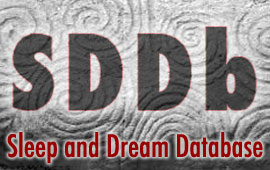 It’s hard to beat the simple practice of keeping a dream journal.
It’s hard to beat the simple practice of keeping a dream journal.
Many exciting new tools are being developed to help us understand the nature and functions of our dreams. For example, researchers are developing technologies for generating a video “read-out” of a person’s dreams based on neural signals from the brain. They are devising methods to stimulate a sleeping person’s brain to instigate lucidity or consciousness during a dream, or even to prompt certain kinds of dream content.
However, none of these new technologies are as valuable for the study of dreams as one of the simplest tools available: the dream journal. A record of an individual’s dreams over time offers the most powerful tool we currently have for the study of dreams. Even compared to the most high-tech devices used by neuroscientists, the dream journal has big advantages in effectiveness, accessibility, and privacy.
Effectiveness
The new dream technologies mentioned above have very short track records. We still don’t know many details about their impact on brain functioning during sleep, nor do we know how the impact varies according to individual differences among people from across the demographic spectrum. And, all these tools rely on measurements of neural activity that have to be interpreted by the researchers and translated into meaningful mental content. That’s not an easy or purely objective process.
However, dream journals as a tool of studying and exploring dreams has a very long track record, going back many centuries (The Sacred Tales of Aelius Aristides in the 2nd century may be the oldest surviving example). We know from extensive psychological research that recording one’s dreams over time yields rich personal insights and self-knowledge. Psychologists have used dream journals starting with Freud’s own dreams in The Interpretation of Dreams, and continuing through Allan Hobson’s use of the “Engine Man’s” dreams in The Dreaming Brain, and now to the works of G. William Domhoff, Michael Schredl, and others who find that dream journals provide legitimate scientific insights into recurrent patterns of content. Only by tracking an individual’s dreams over time can these patterns be identified. Both for psychologists doing research and individuals seeking personal growth, the dream journal remains the most effective technology available.
Accessibility
The new dream technologies are generally used in hospitals or research laboratories. Some devices have been developed for home use, but they tend to be expensive and complicated to operate. Extensive training and preparation are required for the use of these tools, along with a sophisticated computer system and a reliable internet/electrical system. All of these factors have limited the accessibility of new dream technologies to a very small number of people.
The dream journal, by contrast, is available to virtually everyone. To keep a dream journal, you need no training or special preparation, and you don’t have to go to a laboratory or hospital. All that is required is a method of recording your dreams (e.g., by pen and paper, computer, voice-to-text), and a safe place to preserve them over time. This makes the dream journal by far the most accessible tool for studying dreams.
Privacy
Almost every type of new dream technology has connections to the internet that feed data from individual dreamer to the researchers and back again. Even if the researchers preserve the confidentiality of the individual’s data, which of course they should, the sheer presence of an outside observer peering into one’s dreaming experiences and reflections naturally heightens people’s concerns about personal privacy. Some of the new technologies, for example the dream-visualization tools and the dream-altering tools, clearly raise enormous ethical issues around protecting the privacy and integrity of one’s inner thoughts.
A dream journal has the advantage here of being a type of personal diary. Just as a diary provides a safe and private space for honest self-reflection, a dream journal offers the same kind of private space for exploring one’s dreams. A dream journal “works” as a tool without anyone else’s input. All you need is you, paying attention to your own dreams consistently over time. You can keep the results to yourself, and no one else needs to know anything about what you are doing.
None of this is to dismiss the exciting potentials of many new technologies to improve our understanding of dreams and perhaps even enhance our experience of dreaming in a meaningful way. But the enduring power and simplicity of the dream journal, and its advantages in effectiveness, accessibility, and privacy, suggests that a good strategy for new technologies is to build on the dream journal, amplifying what it can already do. Any new dream technology will be stronger if it is grafted onto a solid dream journal system as its roots.
Note: this post first appeared in Psychology Today on May 3, 2021.




